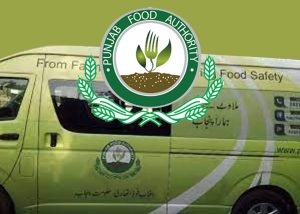
AVN Web Desk
Within the expansive food manufacturing in the United States, a grim truth often remains unobserved by the typical customer — the extensive pain endured by billions of birds bred for meat and egg production annually. This predicament is suffered by a significant number of “broiler” chickens, “egg” chickens, and turkeys, with millions meeting their fate every year, and numerous others falling prey to illnesses, wounds, and strain during the process of transportation.
Egg-laying hens in the U.S. number over 459 million, with a startling 97 percent of them confined to “battery” cages. These cages are barely 16 by 18 inches wide, housing five or six birds each and stacked in towering tiers. In these conditions, up to 125,000 battery hens per shed struggle to produce an astounding 250 eggs per year, ten times their natural output in the wild. Tragically, battery cages deprive these birds of basic natural behaviors such as turning around, preening, dust bathing, and foraging for food. The cruel confinement often leads to cannibalism, increased disease rates, and injuries. The hens endure a polluted environment due to toxic feed, accumulated feces, and ammonia fumes. Antibiotics are routinely administered to combat disease, impacting the immune health of these birds.
Many battery hens meet a grim end, succumbing to disease or injury within their cages. Those that survive but no longer produce sufficiently are labeled as “spent” hens and sent for slaughter, becoming part of the human and animal food supply. Male chicks face an equally dire fate, as over 200 million are killed or left to die each year after hatching, with no value to egg producers.
Even birds labeled as “Cage-Free” or “Free Range” often face subpar conditions. These designations merely signify that the birds are not confined to battery cages, not necessarily that they enjoy a more natural existence. Access to space for movement and outdoor activities like roaming and foraging is not guaranteed.
Molting, a natural process involving feather shedding and the growth of new feathers, initiates a fresh egg-laying cycle. However, on factory farms, poultry producers resort to “forced molting” to boost profits, reducing the process from four months to one or two months. This practice involves extreme stress on hens, with methods like food and water deprivation, medications, and manipulated light-dark cycles. Notably, forced molting, when combined with a Salmonella infection, creates an actual disease state in hens, potentially endangering consumers through egg consumption.
Debeaking, the painful removal of a bird’s sensitive beak with a hot blade, is carried out to discourage cannibalistic pecking, a behavior arising from close confinement. Debeaked birds often struggle to eat, drink, and preen properly, displaying signs of chronic pain and depression. Meanwhile, toe-clipping, the amputation of a bird’s toes, is performed to reduce claw-related injuries in crowded factory farm environments.
Genetic engineering practices result in broiler chickens and turkeys growing to an unnatural size, often rendering them unable to stand or walk. These birds suffer from leg pain and foot sores due to their extreme size. Kept in crowded, polluted sheds, they endure similar conditions as battery hens, including debeaking and exposure to toxic environments. Many of these birds don’t even make it to slaughter, perishing on the farm from injuries, disease, or an inability to reach food and water.
Millions of birds die during the harrowing journey to slaughterhouses. Often in poor physical condition, these sensitive creatures are roughly handled, grabbed by their legs, and crammed into tightly packed cages for transportation, sometimes spanning hundreds of miles. The stress, injury, and suffocation during transport lead to countless deaths.
As consumers become increasingly conscious of animal welfare, the treatment of birds in the meat and egg production industry is a concerning issue that deserves attention and scrutiny.
Advocates are calling for reforms to ensure a more humane and ethical approach to raising and processing these animals, aiming to alleviate the suffering endured by billions of birds every year.








